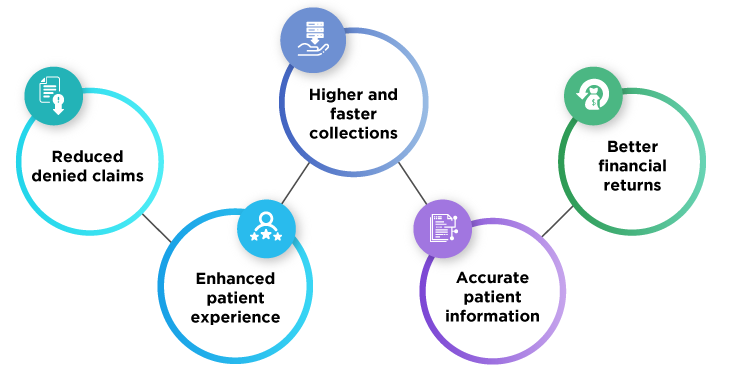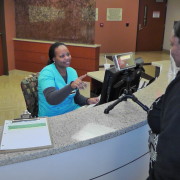Optimizing Revenue Cycle Management in Healthcare is More Important Than Ever

While the US is still suffering from the effects of the highly contagious COVID-19, it has arguably hit its healthcare system worse than anything else. Around 1.4 million people working in healthcare have lost their jobs. The number itself is quite shocking, however, what makes it worse is that the pandemic has changed everything. For instance, the US healthcare system used to be unaffected by any recessions, but COVID-19 has shown otherwise. This is because numerous hospitals have declared layoffs, furloughs, or are even shutting down due to unimaginable financial pressure. With that in mind, as hospitals are opening up, they need to reduce their losses right off the bat, otherwise, it will be hard for anyone to survive. Thus, revenue cycle management in healthcare is more crucial than ever now.

The numbers are drastic
It has already been mentioned that over 1.4 million healthcare professionals lost their jobs. That’s not where it stops, though. Since hospitals made the difficult but necessary choice to prepare for the overwhelming amount of COVID-19 patients by shutting down non-emergency care at their premises, they became financially crippled. The American Hospital Association stated that hospitals are losing a mindboggling $50 billion a month, due to the fact that they are seeing an extremely low number of patients – as low as 70%. Revenue cycle management in healthcare has always been a much-discussed topic, however, as the numbers show, it is of utmost importance now to optimize revenue cycles by reducing costs and mitigating losses – something that RightPatient can help healthcare providers with. But how does optimized revenue cycle management help hospitals deal with the financial crisis?
Benefits of optimized revenue cycle management in healthcare
Reduced denied claims
A streamlined revenue cycle depends on the level of accurate data present within the system. If there is a high level of accuracy, it reduces the chances of denied claims. Usually, denied claims occur when there are mistakes in payment claims. One example is when patients are mistakenly charged for services they have not used. RightPatient ensures that the patient is accurately identified from the beginning to the end of the process – substantially reducing denied claims.
Enhanced patient experience
An optimized revenue cycle means that the FTEs will spend less time on redundant tasks such as rechecking coding and billing for errors and focus more on providing better care to the patients – enhancing the patient experience.
Higher and faster collections
It is quite simple – if the revenue cycle is optimized, there will be higher collections with a lower number of errors. FTEs, thus, do not have their hands full of coding and billing errors – giving them the time to focus on the remaining collections, improving efficiency in the process.
Accurate patient information
An optimized revenue cycle means that you are ensuring patient data integrity; that is, from the beginning of caregiving to collections, the correct patient has been identified. This can be easily achieved using an accurate patient identification platform like RightPatient.
Better financial returns
One of the most vital parts of a healthcare provider that everyone scrutinizes, other than treating patients, is its financial performance. After all, these are the indicators as to how well a provider is doing. An optimized revenue cycle means that there are increased clean claims, faster collections, lower lost claims, and accurate patient data – all leading to improved revenue of the provider.
Since COVID-19 is still affecting the financial performance of providers, they need to ensure that their revenue cycle is as optimized as possible.
Optimize revenue cycle with RightPatient
Optimized revenue cycle management in healthcare means that you need to have the correct data for the patient and you are ensuring that he/she is being billed accurately throughout the whole process. Thus, for a better revenue cycle, you need to ensure accurate patient identification. This is where RightPatient can help you.
It is a touchless biometric patient identification platform and is used by leading healthcare providers for a number of reasons. It prevents medical identity theft, optimizes the revenue cycle, reduces denied claims, prevents duplicate record creation, enhances patient safety, and more – leading to improved financials, boosting the bottom lines in the process.
Upon registration, RightPatient locks the medical records of the patients with their photos. Whenever an enrolled patient comes in, all he/she needs to do is look at the camera and it identifies them within seconds, providing the correct patient record to the EHR user and ensuring accurate patient identification. This ensures that the correct patient is identified right from the start – reducing billing errors and denied claims and optimizing revenue cycle in the process. This is something that every provider needs to ensure to survive during this unprecedented situation.
RightPatient has years of experience and has been helping protect over 10 million patient records. Duke Health and Community Medical Centers, among others, are using RightPatient to ensure safe, hygienic, and accurate patient identification. Are you optimizing your revenue cycle sensibly?










Leave a Reply
Want to join the discussion?Feel free to contribute!